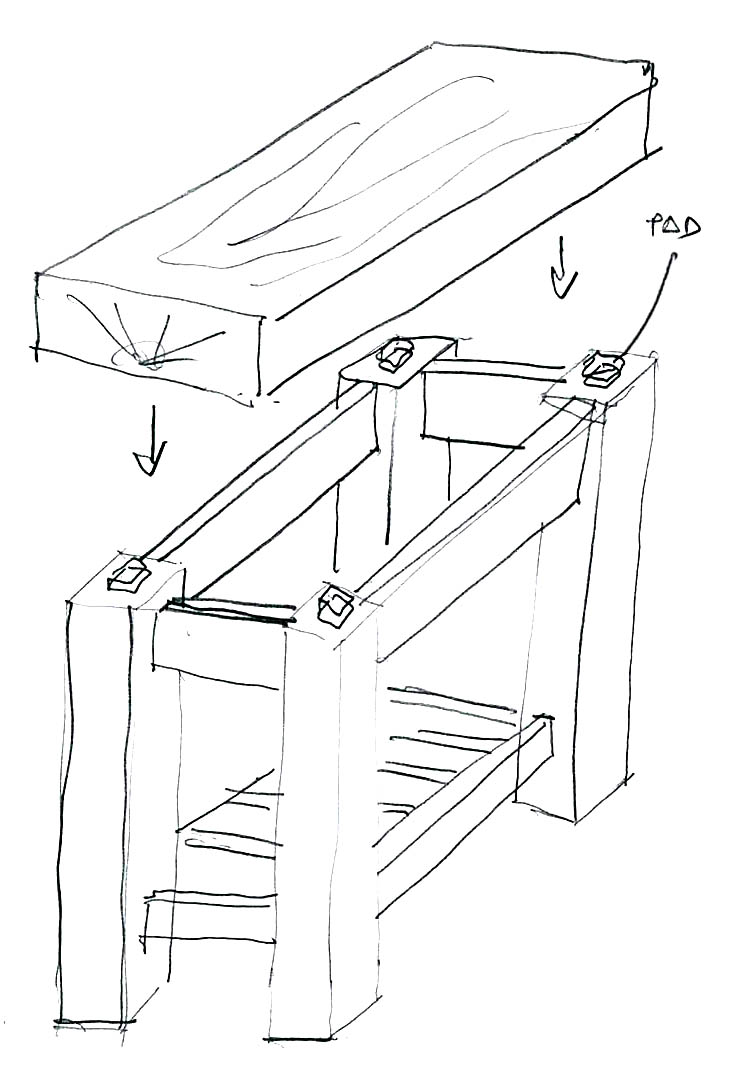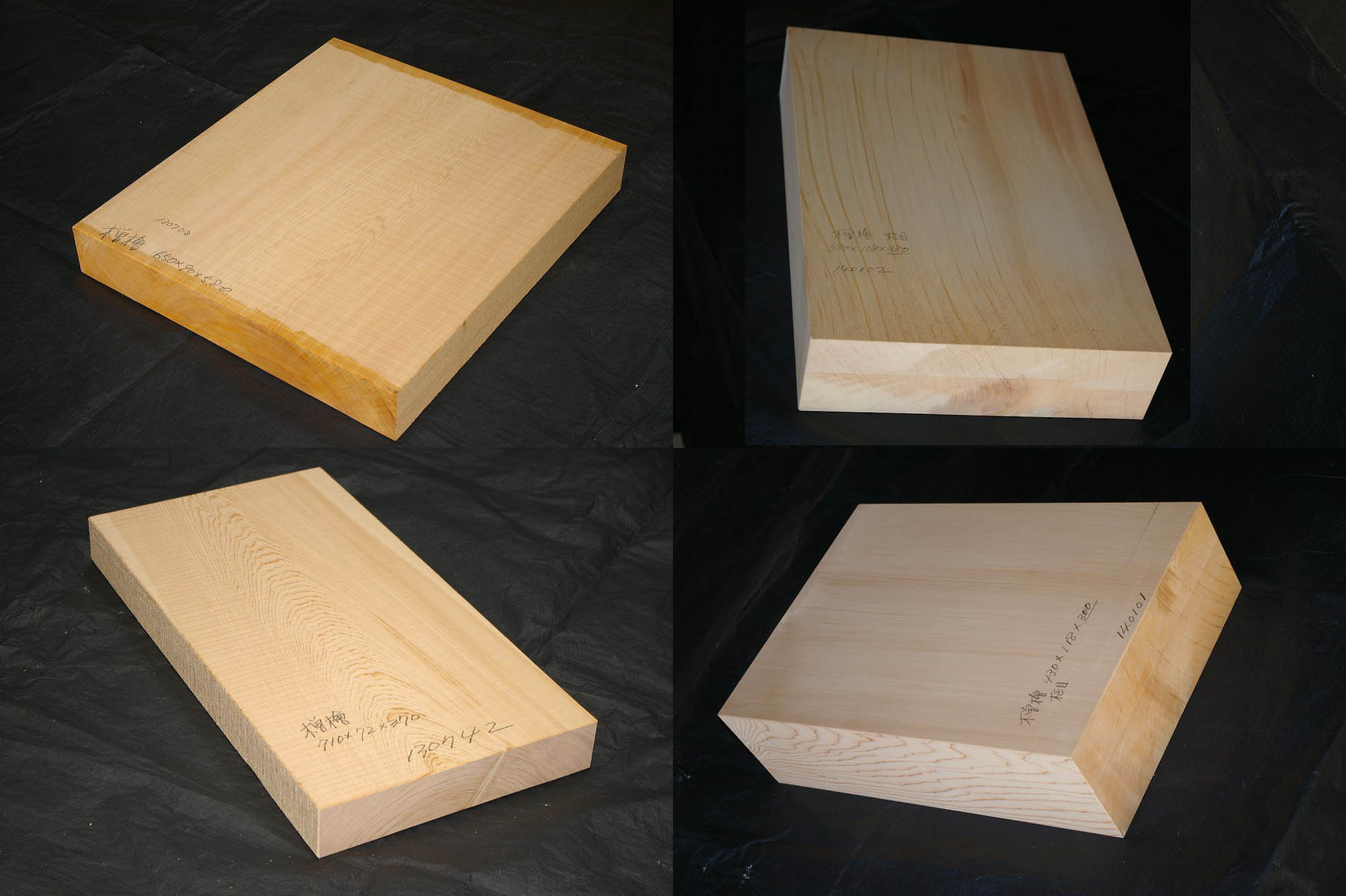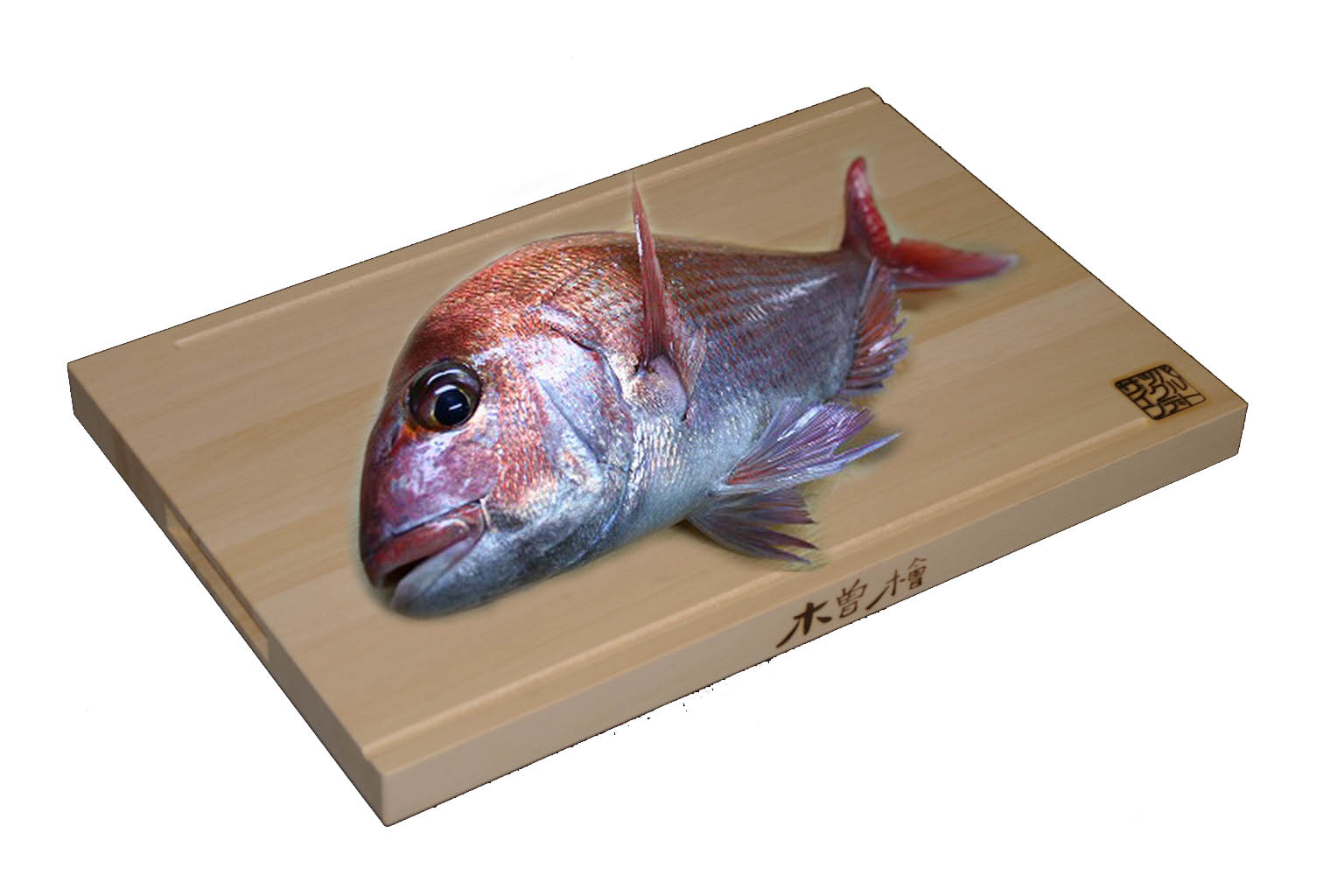chopping table for famous chef
Well, this is not a tub but being a custom woodwork, I decided to add it to this section.
We made a chopping table for a famous chef, with a solid hinoki chopping board.
At first we considered the shipping cost and found out that the normal shipping would cost as much as the table itself…
So we decided to make it “knock down” so it could be shipped by EMS air mail.
Of course the client had to assemble it but we prepared all the joints so no screws are necessary (only glue).
This way we could keep the cost within the price range of an american end-grain chopping table.
as the board itself needs to be removed for washing, we supplied a silicon mat to be cut to size and placed between the top frame and the cutting board. The mat becomes sticky when compressed, so it holds the board in place preventing it to slide.
Also, it absorbs the vibrations hence the sound made when chopping or cutting.
to the left is the sketch of the chopping table
to the right is the picture that the client kindly sent us!
Here are the specs of the table:
* Hinoki wood stand 540x450x745H with urethane finish
(Assembling on site with use of bond.)
(this stand would be without middle shelf to make the assembly easier)
* Packaging (reinforced cardboard box)
* Shipment by EMS
Here below are some cutting boards you can choose. Which one do you like?
here are the indicative costs (keep in mind that solid hinoki cost may vary like a commodity so we cannot guarantee on these prices)
kiso hinoki
140101. 430mm L x 118mm x 300mm(quarter sawn) ¥84,000 plane finished
140102. 580mm L x 108mm x 380mm(quarter sawn) ¥98,000 plane finished
130742. 710mm L x 72mm x 370mm(plank cut) ¥35,000 plane finished
130703. 650mm L x 90mm x 580mm(plank cut) ¥48,000 plane finished


